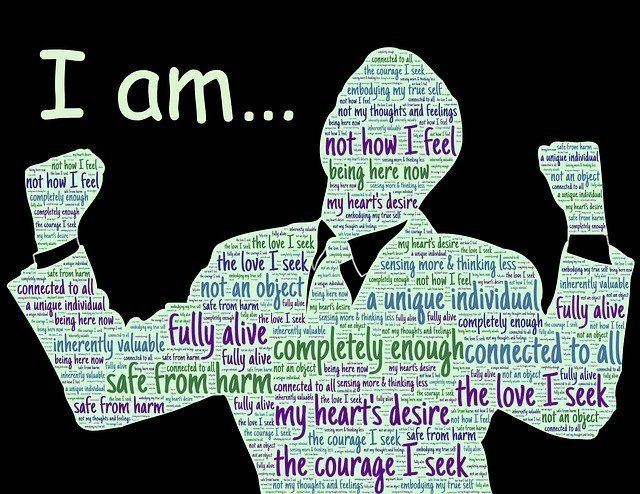Being Authentic Makes Inclusiveness Happens

Rightfully celebrated, authenticity in the workplace may have some limitations. Authentic behaviour, or behaving in a way that aligns with personal values and understanding, enhances employees’ happiness at work as they act in accordance with their values and principles.
Unfortunately, organisations are rarely seen as allowing individuals to be fully authentic. A 2021 Gartner survey, for example, shows that 82 percent of employees believe it’s important for their organisation to view them as a whole person, but only 45 percent believe their employer views them as more than an employee. Why is it difficult to be ourselves at work?
Perhaps part of the answer is how authentic behaviour can lead to interpersonal conflict. In a recent article in Human Relations, Laura Guillén, Hannes Leroy and I found the consequences of behaving authentically depend on how closely individuals identify with the social environment they are in. When an employee feels socially similar to their colleagues, that person can be themselves freely. If, on the other hand, an employee doesn’t feel as socially connected to their fellow workers, authentic behaviour may lead to conflict.
Our reasoning was that authentic behaviour allows other group members to clearly understand the employee’s values, attitudes and goals. Consequently, it reveals either alignment (when values match) or misalignment (when values mismatch) with the social context. In the face of misalignment, authentic behaviour may be considered conflictual. In a team where punctuality is considered the norm, the employee who consistently arrives late will annoy the others, regardless of performance.
We thus hypothesised that for authentic behaviour to be appreciated by others in a group, it should be aligned with the values and norms of the social context, like the team or organisation.
Authentic Behaviour and Conflict
We specifically considered interpersonal conflicts – how much relational conflict individuals behaving authentically have with others in their social context – in two studies. We used social identification to operationalise the perceived alignment between organisational and individual values and identity.
When individuals identify with their organisations, authentic behaviour is naturally consistent with the beliefs, interests, and values of other organisational members. In other words, for those who are closely aligned, authentic behaviour shows how similar the individual is to other members of the organisation. Similar colleagues affirm one’s way of thinking, being and doing, giving rise to a kind of mutual attraction and a sense of social connectedness. The similarity in values, attitudes and beliefs, in particular, reduces dysfunctional relationship conflict.
Thus, we predicted that social identification moderates the effect of authentic behaviour on relationship conflict; authentic behaviour reduces relationship conflict when social identification is high, or when individuals are more aligned with the group. In contrast, it increases this conflict when social identification is low.
Source: Image by Mohamed Hassan from Pixabay
In our first study, at a large Spanish tech organisation, we used multi-source, time-lag data from professional work teams collected at two points in time. In a survey, employees reported the extent to which they behaved authentically at work and to which extent they identified with their organisation. Supervisors later evaluated participants on relationship conflict and task performance. Authentic behaviour reduced relationship conflict for those highly identified with their organisation (i.e., those with high alignment with the social context), but increased it for low identifiers (i.e., those misaligned with the social context).
Task performance was a final outcome variable we measured. Vast research shows that in the context of teams, task performance suffers when interpersonal tensions and conflicts arise between team members. So, we measured team performance to see if authentic behaviour had any effect on team performance, via relationship conflict. We found that authentic behaviour impacted task performance in a positive way, except when there was social/value misalignment between the individual and the organisation.
In the second study, we looked at data based on student teams at a Dutch university. At the start of the project, participants were asked to report the extent to which they behaved authentically in their team and how much they identified with their teams. Two weeks later, participants were rated on relationship conflict by their fellow team members.
Unlike in the first study, the students’ data didn’t show any negative effect of authentic behaviour. In the educational context, authentic behaviour reduced relationship conflict for students who highly identified with their team members, like in Study 1. But for students who didn’t identify with their teams, in the same way, behaving authentically did not result in any social penalty from their teams.
Thus, while the advice “be yourself” must be prescribed with care in professional work contexts given its possible side effects, we found no evidence that the social cost of adhering to it should be a concern in an educational context.
This discrepancy of results between the two studies begs for an explanation to better understand when and why authentic behaviour has meaningful – and especially negative – social consequences. The difference in contexts, namely experienced employees at a tech company in Study 1 and recently formed teams of students in Study 2, provides two potential explanations:
- First, the self-selection and longer period of socialisation might have produced a stronger overall identification and interpersonal similarity in the established work teams than for the recently formed student teams. It is possible that in more homogeneous social contexts, where authenticity is more likely to be manifested in similar ways across individuals, any display of authentic dissimilarity appears more prominent and thus was more likely to be penalised.
- Second, students plausibly represented a situation with fewer structured roles and more limited external control over behaviours than the professional team members. So, the divergent results between the two contexts may imply that whether authentic behaviour reveals social alignment (or not) depends on the situation “strength”. In weak situations, where the range of acceptable behaviours is broader, the social consequences of behaving authentically may be lessened. When social norms, rules and roles are more ambiguous, behaviour isn’t as strictly defined, allowing for more diverse expressions of authentic behaviour.

Source: Image by Gerd Altmann from Pixabay
Alignment vs The “Fit” Trap
At first glance, an organisation could perhaps attempt to ensure that a worker’s true self aligns with their colleagues by hiring individuals who resemble current organisational members. But this isn’t productive. Indeed, this path reduces the quality of decision making and creativity; amongst other reasons, some task conflict is necessary for teams to do well.
Organisations can instead strive to foster both a sense of identification and authenticity. This could be achieved by signalling appreciation of the diverse personal identities of employees, for example, while at the same time making explicit the similarities among individual and organisational fundamental values. While we may hold different individual beliefs, acceptance of fundamental values like freedom, equality and justice connects us to society as a whole. Encourage colleagues to see what unites them, rather than what separates them.
A first step is to assess if any organisational or team values might be too narrow, limiting potential identification for diverse employees. Organisations should naturally ensure that their culture emphasises both diversity and inclusiveness so that all its members feel included and valued for who they are. This satisfies the needs for both distinctiveness and belonging, ultimately benefiting organisations through novel ideas. And the considerations of fairness and attention to employees’ engagement and well-being as they relate to authentic self-expression must be acknowledged.
To quantify employee social identification, managers can conduct anonymous surveys to understand how employees perceive the values they believe the organisation is explicitly or implicitly embracing. Another question may be regarding the extent to which employees share these values.
Read More: How to Boost Your Leadership Authenticity With Three Words
Self-expression Benefits All
Self-expression at work has the potential to benefit both individuals and organisations. Nevertheless, being authentic or “being true to yourself” should never be equated with careless disregard for others; acting in an inconsiderate manner goes against fundamental human values.
On a personal basis, your colleagues will appreciate your authentic self-expression at work – and this is especially true when you feel your values match those of others around you. When you feel “you’re in the wrong place”, being authentic is still beneficial to your wellbeing, but you need to remember that your authentic self-expression may trigger some interpersonal conflict. This is especially likely to be true in closed homogeneous cultures, with rigid and narrow prescribed behavioural norms.
Importantly, you may still decide that being true to yourself is fundamentally important, despite (or because of) the manifested dissimilarity with others that such behaviour may imply. If your organisation’s culture seems to limit your authentic behaviour, consider how aligned your fundamental values are with the organisation’s culture. When the gap is too wide, it might be worth looking for another place where you can be truly yourself.
Organisations, on the other hand, can benefit from authenticity by both encouraging employees to behave authentically at work and facilitating a sense of inclusion. When individuals feel they can be their “authentic self” at work, their work engagement, intrinsic motivation and well-being all increase. However, for this to work, individuals should feel included and appreciated despite their dissimilarity with others.
Discovering “hidden similarities” can help too. In particular, organisations can hugely benefit from explicit and candid discussions of their fundamental collective values: What do we truly value and stand for, as individuals and as a collective? What are we striving for? Why? This discussion allows not only for a better understanding of the meaning given to tasks and missions but also helps individuals determine what fundamental human – and hopefully humanistic – values bring them together in their collective missions.
Deep down, we all embrace many similar fundamental values, so such discussions aid the discovery of these shared values and similarities, without taking away from individual authentic expression. Such candid reflections and discussion may also shape – and modify – organisational strategic goals, if a moment of clarity unveils the core of “why are we doing what we are doing”.
Perhaps one path to the ideal, and idyllic, point of communality whilst embracing diverse personalities is to realise that, as John F. Kennedy famously said:
“For, in the final analysis, our most basic common link is that we all inhabit this small planet. We all breathe the same air. We all cherish our children's future. And we are all mortal.”
Enjoyed the article? Leadership is also about engagement. Check out the video below on Happily. Happily is a digital solution, built to increase employee engagement and create a more fun working experience, with data, analysis and deep insights coupled with gamification elements!
Do you desire to accelerate your growth? Look no further. Necole is a state-of-the-art learning platform that curates personalised learning just for you. To find out more about Necole, click here or email info@leaderonomics.com.

Business
Tags: Be A Leader





